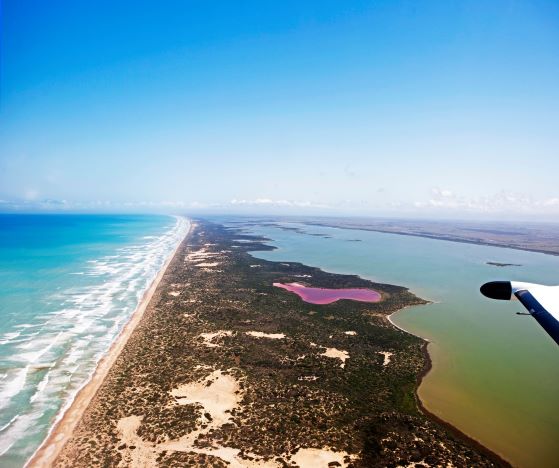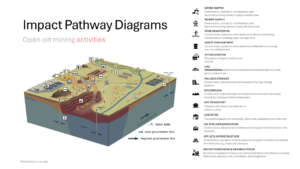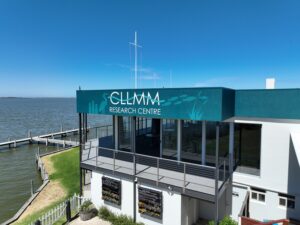The Millennium Drought (1996-2010) had a devastating environmental, economic, social and cultural impact throughout the Murray-Darling Basin. The Coorong, Lower Lakes and Murray Mouth (CLLMM) region, situated at the end of the Basin, was no exception. Despite increased flows returning to the CLLMM since the end of the drought, parts of the region, in particular the Coorong South Lagoon, are yet to return to the environmental conditions observed before the drought.
How the region may respond to future climate change and the adaptation processes for managing such change has been the focus of recent research undertaken by the Goyder Institute for Water Research in collaboration with its partners the Commonwealth Scientific and Industrial Research Organisation (CSIRO) and the Department for Environment and Water (DEW). This Goyder-led research is part of the South Australian Government’s Healthy Coorong, Healthy Basin (HCHB) program, which is jointly funded by the Australian and South Australian governments.
As part of its outputs from the HCHB program, the Goyder Institute has released a suite of Climate Adaptation reports, which aim to help the various parties involved in the management and use of this culturally, environmentally and economically important site. The reports think about, discuss and collectively plan for changes in the CLLMM that may result from future climate change.
The reports cover: the different types of future ecological impacts that may affect the CLLMM and the potential magnitude of key changes; how the various values people hold for the CLLMM may be affected by significant hydrological and ecological change, including further reductions in freshwater inputs and longer-term increases in seawater inputs; and potential pathways for actions for preserving values in the face of change. These potential pathways identify long-term decision options and near-term actions to help communities, policymakers and managers prepare for significant adaptation decisions in the future.
Led by researchers from CSIRO, a series of workshops were held with government stakeholders to discuss climate change in the CLLMM, in addition to drawing on content from more than 80 scientific journal articles and technical reports to inform the discussions and final reports.
The reports provide compelling narratives of what future changes in the CLLMM region may look like based on three major impacts from climate change – decreasing freshwater flows into the CLLMM; increasing sea levels; and warming of land and sea. These changes could result in increased salinity; changes to fish and bird habitat due to changes in vegetation composition and extent; and a risk of declining freshwater flows resulting in sections of the Coorong becoming disconnected.
The research highlights that addressing these changes is not simply a technical management issue, rather it will likely involve society accommodating changes in the values of the CLLMM system, re-evaluation of what is considered a desirable condition for the system, and updating of policies and arrangements that guide decision making at international, national and state levels.
Potential solutions to help prepare for change, identified through the research, include recognising that the CLLMM environment is ever changing, rather than being fixed; considering future change as context for current planning; taking incremental action to prepare for changes in management over time; and learning from past interventions and experimenting with management for future conditions.
The reports build on previous work undertaken by the Institute and its partners as part of the HCHB Scientific Trials and Investigations research project, which was recognised by the Australian Water Association (AWA) recently when it was awarded both the State and National Awards for R&D Excellence.
The reports also provide an excellent foundational resource for the proposed new Research Hub, announced by the Minister for Environment and Water, Hon Tanya Plibersek MP, and South Australian Deputy Premier and Minister for Climate, Environment and Water, Hon Dr Susan Close MP in October 2022. The Goyder Institute has been allocated $8 million in Commonwealth funding to deliver a four-year research program and will work with First Nations, local communities, government bodies and scientists to provide knowledge to support climate adaptation so the key values held by the various stakeholders are maintained.
Goyder Institute Interim Director, Dr Alec Rolston said “This research will help people, governments and managers imagine the ecological and social consequences of climate change scenarios to this internationally important region and help us and our partners identify actions to prepare more effectively for these changes.”
The reports are now available on our website. For more information on the Institute’s climate change research, e-mail Goyder Institute Interim Director, Dr Alec Rolston: director@goyderinstitute.org.


